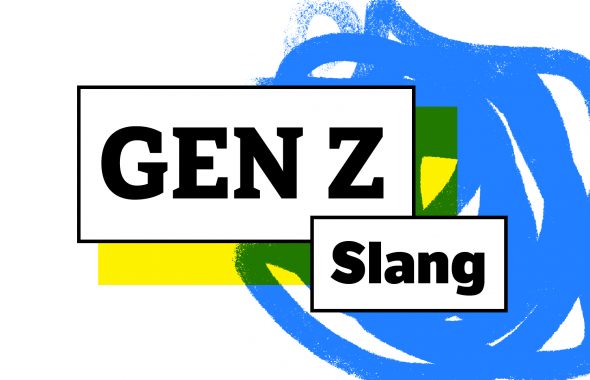It’s a dilemma: you want to be polite when addressing a person or getting their attention, but you don’t know their gender. That means sir, madam, ma’am, miss, and other gendered terms of address and honorifics are out. So what should you do?
The traditional ways of addressing people in English—especially at a distance, when a person might not know you’re talking to them—can present a language gap when it comes to gender-neutral options. But there are actually plenty of alternatives, including gender-neutral terms of address and completely different approaches to dealing with these situations.
These can be useful in many different situations in everyday life, such as when addressing an email to an unknown person, greeting a customer, or just alerting someone that they’ve dropped their phone.
These kinds of language considerations might seem tedious, but thinking about them in advance is a great way to be prepared for situations that might stump you as far as what to say. And demonstrating that you’ve given it some thought can go a long way to showing respect, especially for nonbinary people.
Language innovation is great, but in general, using simple, natural-sounding alternatives is usually better than trying to get too cute (we recommend against going around and addressing people as Your majesty, for example).
Names
It might seem obvious, but a person’s name is often the best choice to address them. And yes, there are cases in which you might know a person’s name but not their gender—especially if your job involves greeting people who have an appointment. Still, some people may feel that using a first name is too familiar or not respectful enough, and referring to a person by their last name only without a title before it is usually reserved for close friends.
⚡️Using the term Mx.
The more recent term Mx.—a term that functions as a gender-neutral form of Mr., Mrs., or Ms.—could work in these situations, but most people aren’t familiar with it or its pronunciation (usually [ miks ]), so it’s not likely to be useful in most situations until it becomes much more established in the language.
Other titles
In certain contexts, referring to a person with their professional title (such as Doctor, Professor, or Coach) can be a good option if you’re certain it’s accurate.
friend
The word friend can be a warm and friendly way of addressing a person, especially if you have the kind of personality that can pull it off, as in Hello there, friend—can you tell me how to get to the highway from here?
Supporting this is the fact that the plural friends is sometimes used to address a group, even in formal settings, such as when addressing an audience during a speech.
However, while addressing a stranger as a friend may be intended as welcoming and inclusive, it can come off as overly familiar, insincere, or even condescending.
More casual terms
There are some options that are similar to friend but even more casual, including buddy, pal, and mate. The fact that these are intentionally overly familiar can make them effective ways of showing warmth, but, just like we mentioned about friend above, that can also backfire.
And keep in mind that while these may not be considered gendered, they are traditionally and most commonly applied to men and boys, so some people might recoil at being referred to in these ways.
the person
This one can be a particularly useful option for someone who greets customers, but it requires more than just the phrase itself. Referring to a person as the person can be a bit… impersonal, but there are ways you can personalize it. For example, it can be paired with a polite expression and perhaps a statement that identifies a person by a possession or article of clothing (but, importantly, NOT a comment about their body or physical appearance).
For example:
- Welcome! I can take the person with the yellow hat. Hi, how are you?
Notice that this example includes a follow-up greeting—always a good idea to establish politeness after you’ve gotten a person’s attention.
you there
Shouting “Hey, you!” at someone may be an effective way to get their attention, but it’s definitely not the peak of politeness. Still, there are ways to soften it. The first way is adding the word there. For whatever reason, this can make it sound a bit less blunt (if you say it in the right way).
The second way is one we’ve already discussed: adding an identifying note about the person so they know they’re the one being addressed.
For example:
- Excuse, me—you there, with the cool umbrella. Can I ask where you bought it?
- Hello—you there with the red bag. You dropped your red scarf.
Excuse me and other approaches
As you can see, a lot of these examples not only use a term of address, they also include a basic polite expression such as Excuse me or Hello. Because some terms of address can sound less natural or perhaps impolite (especially at the beginning of a sentence or when getting a person’s attention, for example), skipping a term of address altogether in these situations can sometimes work better. And in fact a polite expression is often the most important part, both functionally and in terms of politeness.
For example:
- Good morning! Can I have some assistance with this?
- Hello! I can help you right here.
- Welcome! Please feel free to sit anywhere.
Often, the specific meaning of the expression or greeting that you use is not all that important—it’s more about using it to establish friendliness or politeness at the very start of addressing someone. And remember, it’s not just what you say but how you say it that matters. Tone goes a long way toward establishing that you’re coming from a place of respect.
And there’s one other thing you can do. When addressing someone, don’t forget you can establish politeness through gestures, such as adding a friendly wave to go along with whatever you’re saying. And a smile always helps.
In emails and letters
The traditional salutation Dear Sir or Madam is outdated and, just like the traditional greetings ladies and gentlemen and boys and girls, excludes nonbinary people. If you know the name of the person you’re addressing the message to, simply use that. If that’s not available, try something general. For example, when applying for a job, you can use the title you’ve been instructed to send it to, such as Dear Hiring Manager.
The traditional To whom it may concern may sound impersonal, but everyone’s used to it and no one’s going to dwell on the fact that you’ve used it.
When all else fails, try something simple: Hello or Good morning are perfectly acceptable ways to open a letter.














